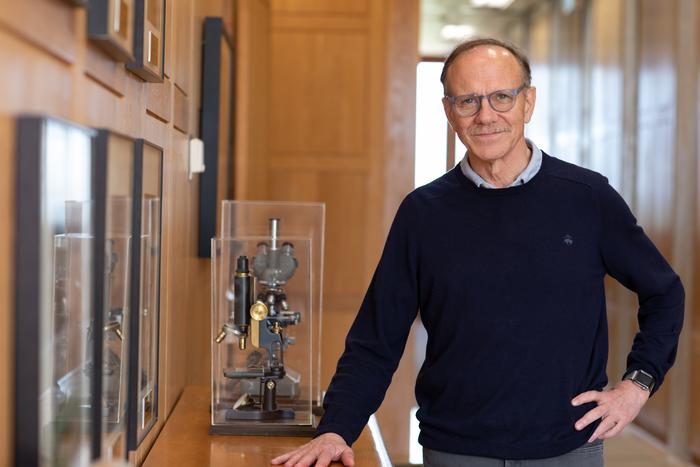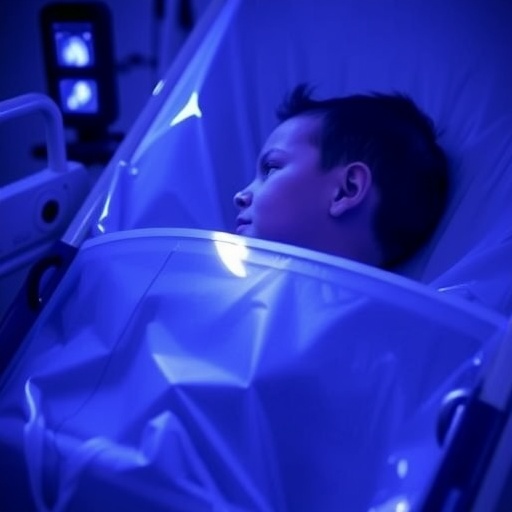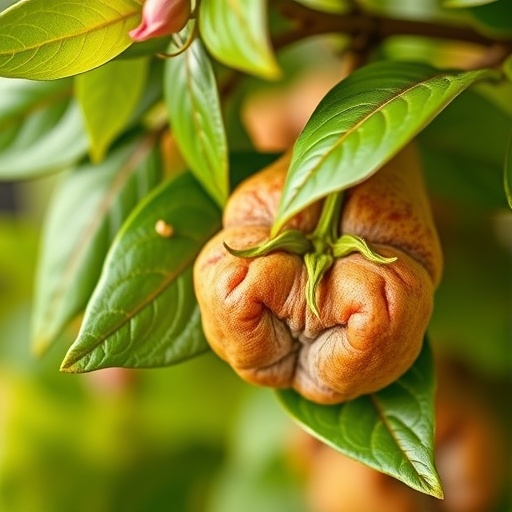LA JOLLA (July 31, 2024)—The Salk Institute was awarded $3.6 million by the California Institute for Regenerative Medicine (CIRM), one of the world’s largest institutions dedicated to regenerative medicine. Salk Professor Rusty Gage will lead the new CIRM-funded Shared Resources Laboratory focused on stem cell-based models of aging and neurodegeneration.

Credit: Salk Institute
LA JOLLA (July 31, 2024)—The Salk Institute was awarded $3.6 million by the California Institute for Regenerative Medicine (CIRM), one of the world’s largest institutions dedicated to regenerative medicine. Salk Professor Rusty Gage will lead the new CIRM-funded Shared Resources Laboratory focused on stem cell-based models of aging and neurodegeneration.
The award is part of CIRM’s latest round of funding to address challenges in the regenerative medicine field. The state agency dedicated $27 million to help establish six new Shared Resources Laboratories, each designed to foster collaboration among California researchers.
Stem cell-based models of human tissues and organs have become an important tool for studying health and disease. However, the techniques have yet to be standardized across labs and are not widely accessible to all researchers. The CIRM funding will enable Salk experts to share their tools and expertise with labs across the state. The resulting collaborations could help accelerate the discovery of new therapies, biomarkers, and drug candidates for age-related diseases like Alzheimer’s and Parkinson’s.
“Over the past five years, we have banked cells from a unique aging cohort, and with CIRM’s generous support, we will be able to distribute these quality-controlled resources to California’s stem cell and aging research communities,” said Gage, Vi and John Adler Chair for Research on Age-Related Neurodegenerative Disease at Salk. “Our goal is to enable research into a range of age-associated pathologies, including neurodegenerative diseases.”
Gage is a pioneer of stem cell-based techniques for modeling the human brain in health and disease. In 2015, Gage’s lab pioneered a method to convert older people’s skin cells into brain cells, all while retaining the cells’ molecular signatures of aging. Previous methods essentially wiped away all evidence of the person’s age, so this new technique finally made it possible to study brain aging using stem cell-based models.
His lab has also advanced the use of brain organoids—three-dimensional collections of cells that mimic features of human brain tissue. While most brain organoids are made solely of neurons, Gage’s state-of-the-art models also include non-neuronal cells like microglia and astrocytes. This enables scientists to study the role of these important cell types in aging, inflammation, and neurodegeneration.
The new Shared Resources Laboratory at Salk will provide greater access to these top-notch resources and help train other scientists and clinicians in the latest stem cell-based techniques. It will also encourage the standardization of cell resources and protocols to foster reproducible research and strengthen future clinical trials.
“By investing in Shared Resources Laboratories, we are not only providing essential infrastructure for stem cell research but also positioning California at the forefront of this transformative research,” says Rosa Canet-Aviles, vice president of Scientific Programs and Education at CIRM. “Through these awards, CIRM will continue to drive progress, now focusing on cutting-edge disease modeling using human stem cells.”
About the California Institute for Regenerative Medicine (CIRM):
At CIRM, we never forget that we were created by the people of California to accelerate stem cell treatments to patients with unmet medical needs, and act with a sense of urgency to succeed in that mission. To meet this challenge, our team of highly trained and experienced professionals actively partners with both academia and industry in a hands-on, entrepreneurial environment to fast-track the development of today’s most promising stem cell technologies. With $5.5 billion in funding and more than 150 active stem cell programs in our portfolio, CIRM is one of the world’s largest institutions dedicated to helping people by bringing the future of cellular medicine closer to reality. For more information, go to www.cirm.ca.gov.
About the Salk Institute for Biological Studies:
Unlocking the secrets of life itself is the driving force behind the Salk Institute. Our team of world-class, award-winning scientists pushes the boundaries of knowledge in areas such as neuroscience, cancer research, aging, immunobiology, plant biology, computational biology, and more. Founded by Jonas Salk, developer of the first safe and effective polio vaccine, the Institute is an independent, nonprofit research organization and architectural landmark: small by choice, intimate by nature, and fearless in the face of any challenge. Learn more at www.salk.edu.




